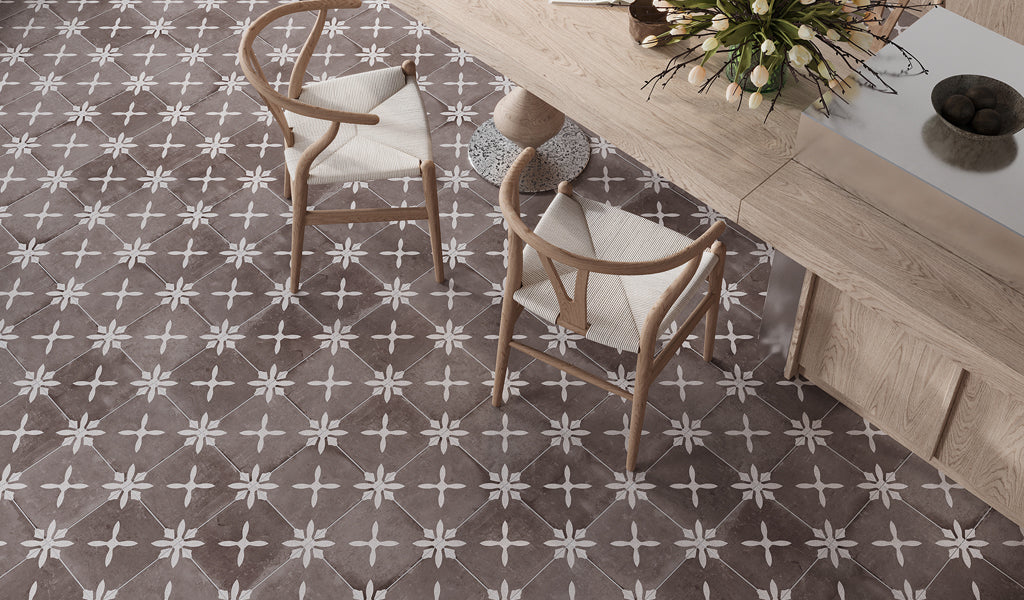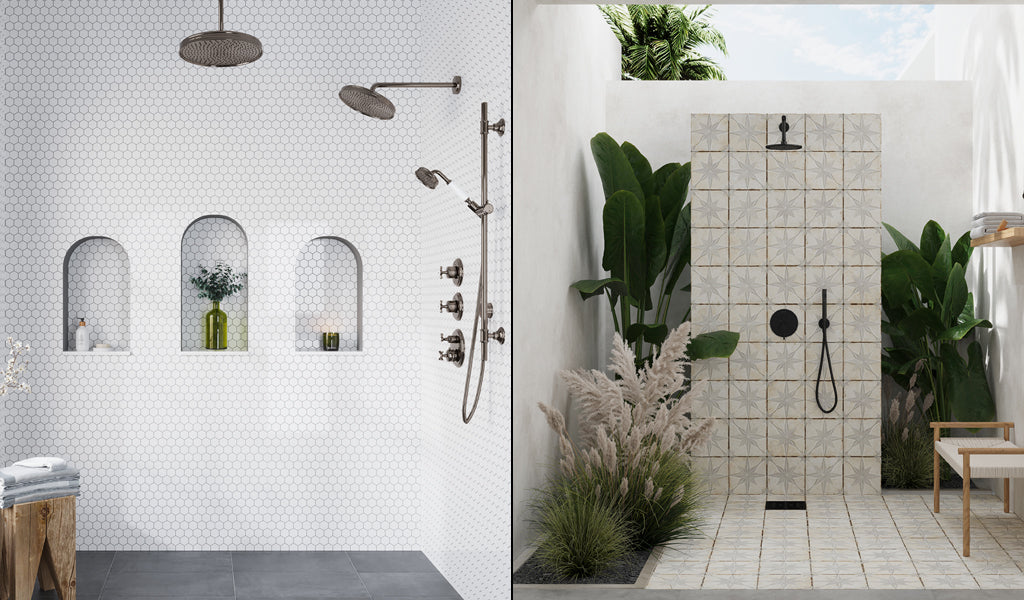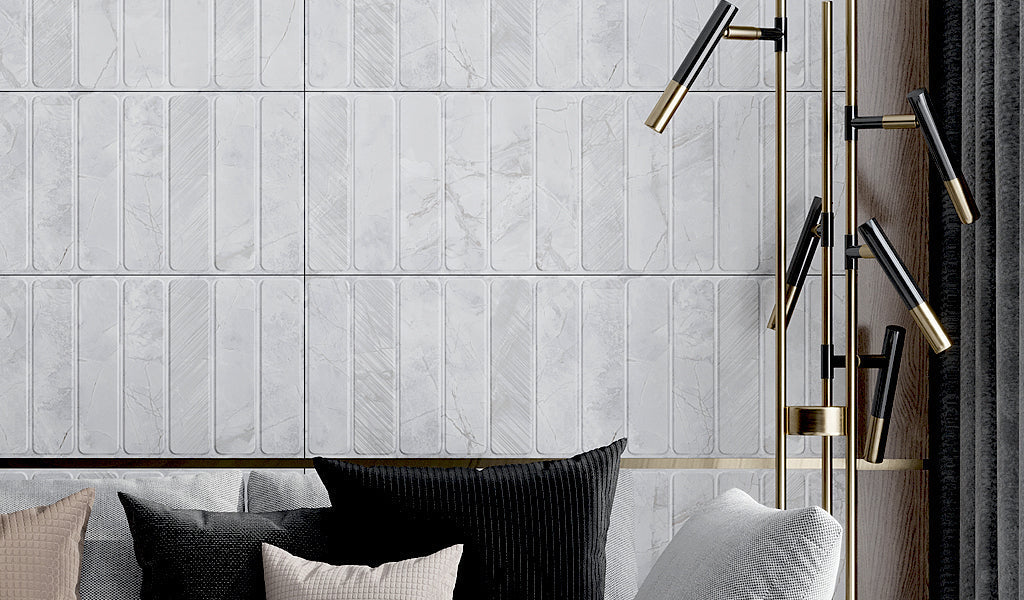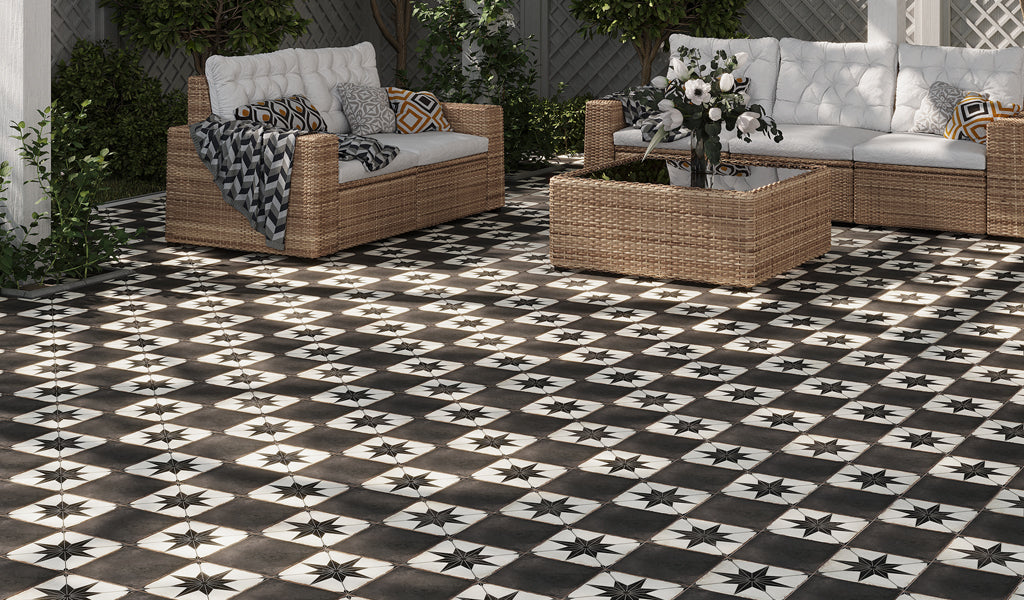What is Travertine Tile
Apr 30, 2025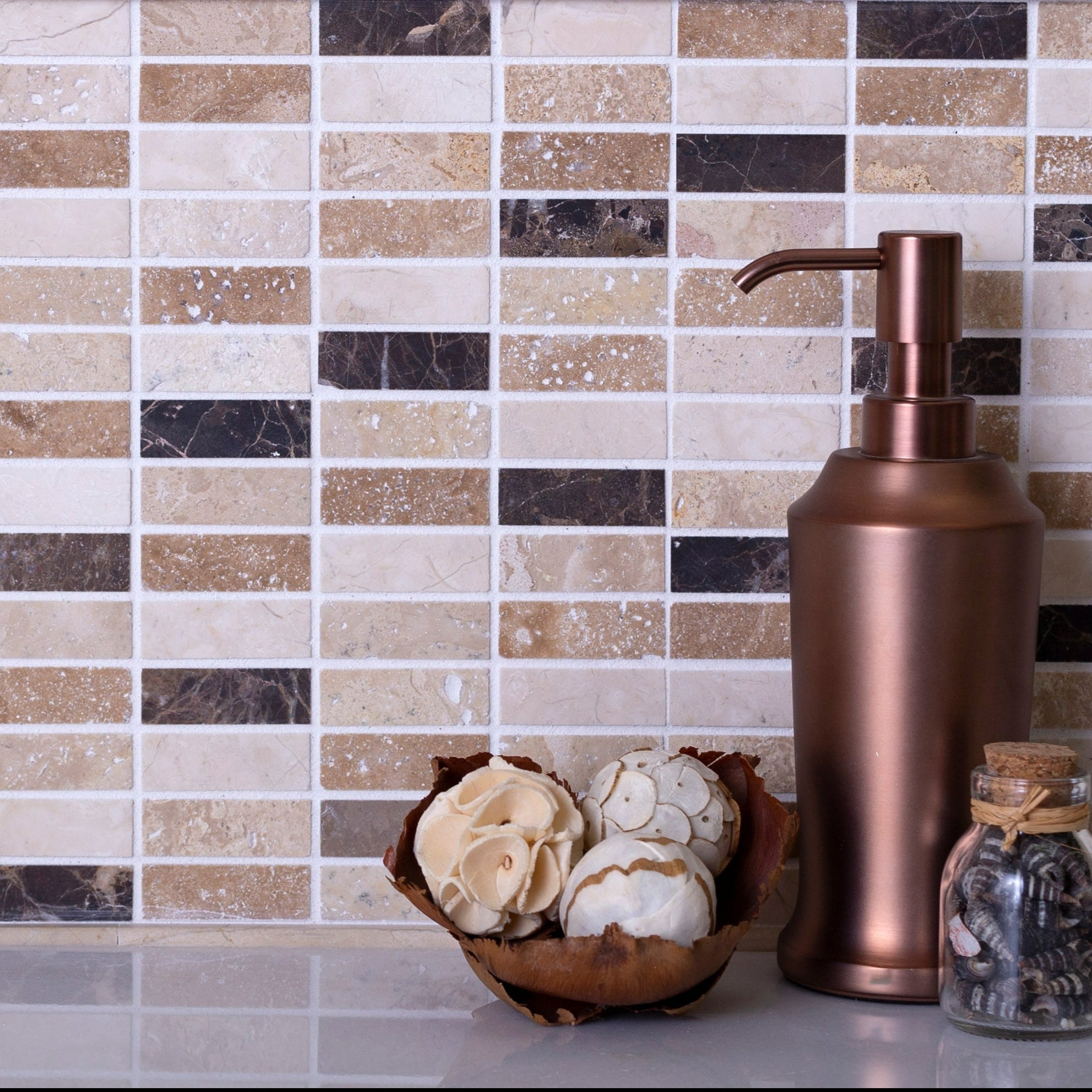
There are many wall and flooring materials out there, and natural travertine is one of the most beautiful options capable of transforming a mundane space into a classy one. This sturdy, hard-wearing, luxurious stone with a raw, weathered appearance is the perfect fit for interior and exterior applications. But the question remains: What is travertine tile?
With its popularity soaring, it’s clear that travertine tile flooring has become a sought-after alternative to conventional stone materials such as marble or slate. It elevates any space it inhabits with a unique blend of beauty and practicality.
Ahead, we look at the characteristics of travertine tile and how it has become a symbol of luxury. We also explore its pros and cons, applications, and cost, as well as tips for installing and maintaining this classic wall and floor stone.
Characteristics of Travertine Tile
Historically known to grace the floors and walls of Roman temples and monuments, travertine was a well-loved choice thanks to its rustic appeal, neutral coloration, and honed finish. Fast forward to modern times, this natural stone hasn’t shaken off its charm, and its organic flair continues to play out in contemporary spaces as an artistic and sculptural focal point. But with all its glorious enchantment, what exactly is travertine tile and why has it become the go-to for high-end interior design?
Essentially a type of subterranean limestone, travertine is formed under pressure and heat from the earth’s crust in mineral-rich hot springs. These mineral deposits mix with calcite, a precipitation of calcium carbonate, to create irregular holes and swirls that give travertine stone its distinctive character.
Quality travertine can be sourced from quarries all over the world, including Turkey’s Denizli, Italy’s Tivoli, Mexico, and Peru. Like most natural stones, it is collected in blocks, then cut down to standard tile shapes and sizes. Its distinctive markings mean each piece of tile looks different and feels personal. Let’s look at some of travertine tile’s characteristics below:
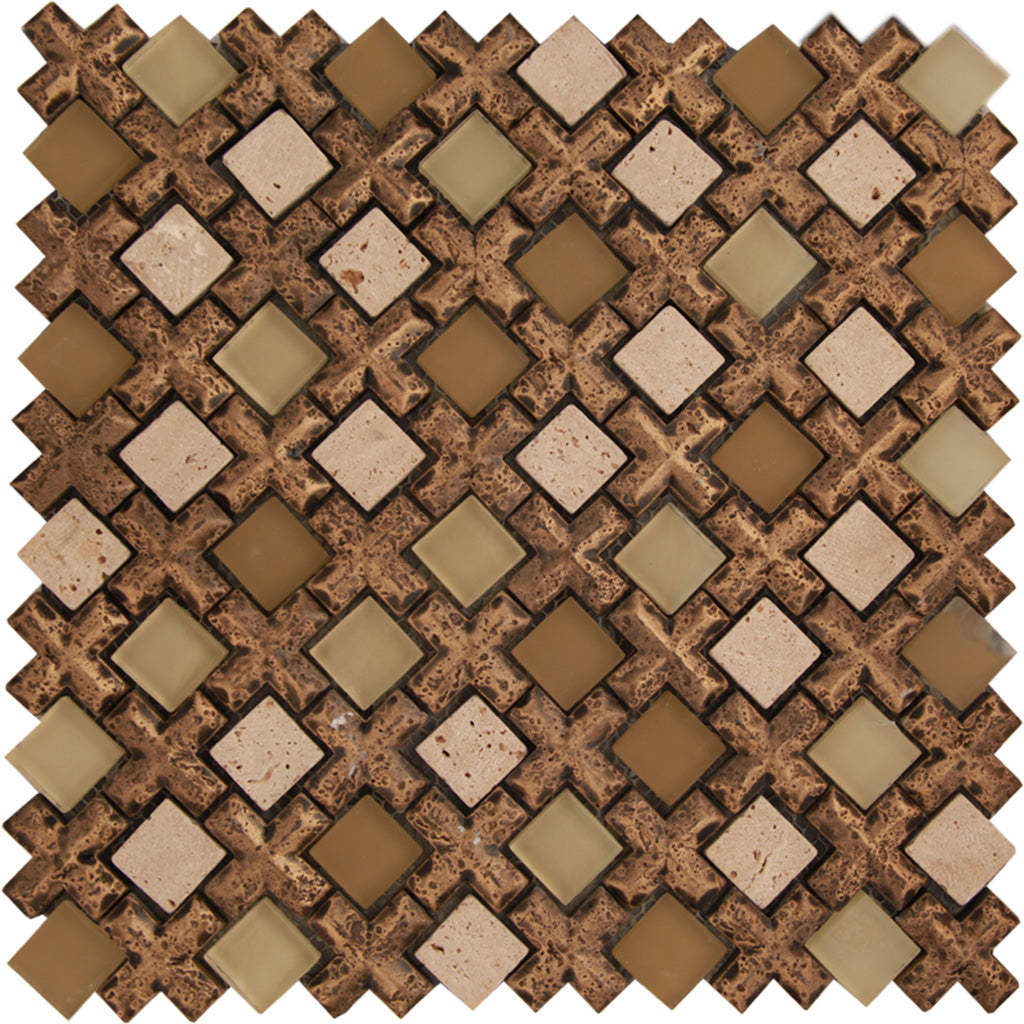
1. It’s a Luxurious Wall and Flooring Material
With thousands of years of history, this sedimentary stone has the tactile appeal of marble tile but with a more discreet essence that works in any space. Travertine tile possesses enduring beauty and versatility, easily finding its place in private residences, commercial settings, and hospitality projects. It ages beautifully, developing a patina that gives kitchen backsplashes, fireplace facades, living room floors, and bathroom walls even more character over time.
2. It Complements Diverse Design Aesthetics
Today, travertine tile flooring remains a captivating pick for designers and homeowners alike, and that’s largely due to its ability to imbue indoor and outdoor spaces with a sense of grandeur that’s subtle yet unmistakable. Although it has traditionally been associated with classic and country-style interior settings, the advent of biophilic design has made travertine a key trend for those who appreciate contemporary and understated luxury environments.
Apollo Tile’s travertine tiles bring a touch of the earth’s artistry into a variety of stylistic contexts and can serve interiors in two ways: as the room’s main point of attraction or as a blank canvas that grounds both subdued and bold schemes—where it pairs effortlessly with wooden fittings, sumptuous upholstery and textiles, as well as earthy color palettes.
3. It Boasts Subtle Shading and Unique Texture
While 99% of minerals that form travertine are colorless, the other 1% of the stone carries traces of iron and organic pigments, which give it soft tonal ranges in light ivory, warm beige, rich brown, and the creamiest of creams. In addition to its color, natural travertine fascinates with its fibrous and porous texture, which is a result of the gas bubbles that are trapped between the layers of stone over the years of its formation.
This shouldn’t be seen as a flaw but rather an inherent characteristic that contributes to its visual intrigue. It's the coloration and raw texture of large-format travertine tiles that transform ordinary walls and floors into prestigious surfaces able to stand the passage of time.
4. It's Available in Different Tile Finishes
Innovative manufacturing techniques allow for various ways to finish travertine stone, including polished, matte, honed, and textured. A polished travertine floor tile has a reflective surface often used for wall applications. It’s a great choice for areas where you wish to enhance light, such as dimly lit kitchens and powder rooms.
In honed finish, travertine possesses a low-shine matte appearance that lends a more refined and laid-back feel. Textured travertine makes for the ideal non slip tile and a fabulous addition to high-traffic and wet areas. It provides traction underfoot, reducing the menace of falls and slips.
5. It's a Durable and Long-Lasting Choice
Like most natural stones, travertine tile is porous and highly vulnerable to moisture, staining, and acid damage. However, the use of sealants can enhance its durability and resilience, making it possible to survive high footfall and harsh external weather conditions throughout the year.
6. It’s Suitable for Various Outdoor Applications
We often speak of tile being an interior feature, whether adorning the kitchen backsplash or bathroom walls and floors. But what’s overlooked is how it makes stunning surfaces outdoors. The same goes for large travertine tile flooring; when properly installed and sealed, its superior properties make it a reliable choice for exterior walkways and driveways, patios, garden walls, and pool decks.
Types of Travertine Flooring Tiles
Natural travertine stone comes in two variants: filled and unfilled. Let’s briefly discuss how the two measure up:
1. Unfilled Travertine Tiles:
As mentioned previously, the millennia of sedimentary processes lace travertine with pitted holes, highlighting its authentic beauty. This choice of material imparts a rustic character that works wonderfully on vertical surfaces like accent walls, backsplashes, and fireplace surrounds.
However, these air pockets are exposed to moisture and can easily trap dirt over time. This simply means that too many holes can compromise the integrity of your installation, especially in wet environments and areas prone to high footfall. These holes are filled in at the factory, where a travertine repair filler enhances the quality and appearance of the stone.
2. Filled Travertine Tiles:
This option presents a smooth, modern, and polished appearance. Filled travertine tile becomes even more practical for high-traffic and outdoor areas or any spot that requires a durable, resistant, and easy-to-clean surface.
Pros and Cons of Travertine Tile
To summarize and help you quickly grasp the pros and cons of travertine tile, we’ve provided a table below:
| Pros of Travertine Tile | Cons of Travertine Tile |
|---|---|
| A stylish choice available in varying colors, finishes, and sizes | Has a porous structure prone to water absorptions and staining |
| Versatile and adaptable to diverse interior design styles | Requires periodic sealing due to high porosity |
| Strong and often durable than other natural stones | Can crack and chip easily when not properly installed or maintained |
| The raw texture conceals scratches and marks bettere | Sensitive to acidic substances such as vinegar and citrus juices |
| Options are available for both indoor and outdoor applications | Harsh cleaning agents can leave dull spots or permanent damage |
Uses and Applications of Travertine Tile
Travertine tile has long been cherished for its sophistication of versatile applications. Whether a new build or a renovation is on the horizon, below are different ways you can incorporate the striking patina of this natural stone into your project:

- Travertine as High-Traffic Flooring: Sealed travertine flooring tiles can withstand impact from bustling footsteps. Tiling material with a raw-textured finish, like our Beige Brown 12x12 Polished Brick Marble Mosaic Tile, can help impart a warm and inviting ambiance in an otherwise stark interior, even better when paired with hardwood tiles.
- Travertine as Backsplash or Wall Feature: The resurgence of warm, cozy, neutral spaces makes travertine tile backsplash or wall design an admirable choice. It can go on kitchen and bathroom backsplashes, tub surrounds, and shower walls. Consider our Brown 11x11 Polished Matte Textured Square Glass Resin Stone Mosaic Tile for a catchy wall feature. Perfect as a living room or foyer tile, it combines stone and glass to bring textural dimension to vertical surfaces.
- Travertine as an Outdoor Material: Exceptionally robust travertine, like our Beige White 12x12 Polished Brick Marble Mosaic Tile, allows you to extend the allure of natural stone to outdoor living spaces. Whether used on pool surrounds, walkways, garden walls, or as patio flooring, it can withstand the elements without deteriorating in quality. Exterior travertine flooring tile creates a seamless indoor/outdoor transition: from the living room onto the patio and the garden beyond!
Installation of Travertine Tile
Travertine tiles, like other natural stones, need proper installation for long-lasting performance. Here are a few tips to keep in mind:
- When ordering tiles from Apollo Tile online tile store, we recommend investing in 10% more product for wastage and future repairs.
- The wall or subfloor on which the tiles are to be installed should be level, smooth, clean, and dry. This will help with adhesion.
- Dry lay the tiles before applying the adhesive to see how the layout will look. This will also help get alignment right and achieve a refined finish if you're working with veined tiles.
- When laying the tiles, apply adhesive in small sections so it doesn’t dry out before you have completed the job. Always use spacers to maintain even gaps between the tiles.
- Grouting the tiles should only be done once the adhesive has completely dried. To bring it all together, apply a sealant to the tiles and grout lines. This step is crucial as it will safeguard the integrity of your wall or floor installation.
How to Clean Travertine Floors & Walls
Travertine wall and floor tile requires a certain amount of maintenance to preserve its beauty and enhance its resilience. These natural stone tiles are porous, and the best way to guard against water infiltration and staining is to use a sealant. We advise a penetrating sealer, which will fill the voids in the stone and create an invisible barrier that repels water.
So, how to clean travertine floors and walls? On the more basic cleaning, the best way to care for travertine backsplash tiles is to wipe with a damp cloth. Travertine tile floor cleaning should be done regularly using a soft mop dampened in a solution of lukewarm water and pH-neutral cleaner specifically designed for natural stone. A soft bristle brush can be used gently on areas affected by stubborn stains. Avoid harsh chemicals and abrasive tools as they will damage the tiles.
Cost and Value of Installing Travertine Tile
Travertine flooring tile falls mid-range in terms of material and labor expenses. The type, quality, and size of your preferred tile will determine how much it costs. In terms of labor, the complexity of the project and the size of the area to be tiled will help in assessing your overall budget.
On average, travertine tile costs anywhere from $3 to $30 per square foot, and a professional installer can charge anywhere from $5 to $15 per square foot. Despite the upfront expense, travertine’s longevity and splendor will undoubtedly add value to your property. Our ultimate guide to finding the right tile installer comes in handy when planning a tiling project.
Conclusion
To sum up on what is travertine tile, this natural stone is one of the most beautiful materials that continues to captivate homeowners and designers. Its rich history and unique characteristics make it a revered choice for bringing timeless flair to various applications, including indoor and outdoor flooring. For anyone who desires enduring elegance, travertine’s earthy tones and distinctive texture will indulge any space, traditional or modern, with beauty that transcends the years.
At Apollo Tile, our travertine tile collection is crafted to the highest standards and allows for endless creative possibilities. We offer a carefully curated selection of styles, finishes, and sizes to suit various design preferences, whether it’s a classic, contemporary, rustic, or industrial setting. We also have an amazing range of limestone tile that provides great aesthetic value and practical benefits. Reach out to our customer service team and let us help make your tile selection process effortless and your design vision a reality.
Frequently Asked Questions:
1. Is travertine tile suitable for all rooms of the home?
This depends on the chosen tile. Some options are suitable for all applications, including shower flooring, patios, and swimming pools. Other options are approved for interior wall applications only. This means they cannot be used on floors or outdoors. Always check the tile specifications before purchasing to see if it’s rated for your specific project.
2. How can I maintain the beauty of travertine over time?
Like most natural stones, travertine tile flooring has a porous structure susceptible to staining. Seal the tiles and grout lines once or twice yearly to maintain an immaculate appearance. A sealant adds a protective layer that guards against seepage and enhances durability.
3. Is travertine tile flooring expensive than other tiling materials?
Travertine tiles are more expensive than ceramic flooring tiles and often require the expertise of a professional installer for a successful application, which adds to the overall cost.
4. Can travertine tile be used for outdoor projects?
There is natural travertine stone tile rated for outdoor use, including patios, garden walls, and swimming pools. For the best performance, the tiles should be sealed periodically. If you’re not up for the challenging upkeep, opt for travertine-look porcelain, which is more robust and far easier to maintain than genuine material.
5. What are the best cleaning methods for travertine tiles?
Travertine tile cleaning must be done with products suitable for natural stone and spills must be wiped promptly to prevent staining. Avoid acidic chemicals or cleaning agents like bleach as they can etch and strip away the natural sealant of the stone, causing permanent damage.





